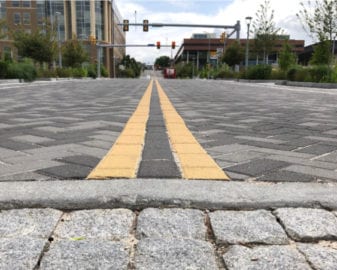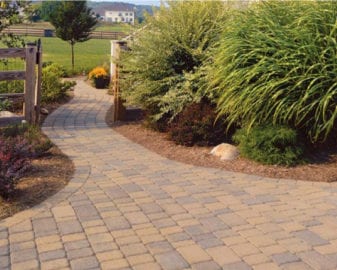Urban planning is not an abstraction. Even though the “right” way to do urban planning has long been a contentious subject, recent years have seen a renaissance in urban planning — and urban renewal — driven by the desire to “green” the built environment. These efforts don’t simply make for a prettier downtown, or draw more tourists; they have, per the NIH, tangible health benefits for the residents of big cities and small towns alike. At Unit Paving Inc, our municipal paving clients have seen the benefits firsthand. We’d like to share some of what we have learned in working with them.
Design for People
The 20th Century saw a revolution in transportation as the easy availability of cars and trucks made it easier to move people and goods farther and faster than ever before. The net result was an economic boom, but our cities have suffered; what had once been designed for foot traffic was now the territory of motor vehicles.
A variety of approaches have seen the commons returned to residents. People moving to a new town will often want to know its walk score, determined in part by its ease of pedestrian access, and the ability to walk to the kinds of amenities most of us use on a daily basis instead of driving. Designing sidewalks and paved walkways can make your city more friendly to foot traffic, reduce its carbon footprint, and make it safer for kids and families.
Slow Down
The Slow Movement — including the Slow City Movement — has really taken off in the last decade. More than encouraging cars to slow down in urban areas, this is about bringing the pace of town and city life to a pace that encourages people to savor their surroundings, building community both in and away from green spaces like parks and bike paths. Protecting the environment, as well as the physical and emotional health of residents, are among the movement’s key tenets.
Embrace a Sense of Place
We shouldn’t have to travel somewhere else to feel as though we’ve found a place with an identity. But the sad reality is that too many urban areas are more or less interchangeable, clogged with the same anonymous architecture, chain stores, and general absence of civic identity.
Invest in your public (and public-facing) spaces. Give thought to what makes your town unique — its history, its residents, and the many traditions and cultures that have the potential to flourish within its borders — and give it a place to shine. Rehabilitate and retrofit existing architecture, especially if it’s historically significant, and include flexible spaces that can accommodate farmer’s markets, street fairs, festivals, and performances. Give your neighbors a chance, and an excuse, to get to know one another.
Include Some Blue Among the Green
As the greening of municipal spaces accelerates, another color is coming to the fore: blue. Some areas, like the canals of Venice, or the ten thousand lakes of Minnesota, are already synonymous with the integration of water in public spaces. The reality is, the potential for blue space exists in many municipalities.
Waterfront parks, marinas, and other forms of low-impact development have revitalized many cities’ urban planning. However, even landlocked cities are discovering that even smaller-scale blue spaces like ponds and fountains fulfill a number of life-enhancing functions. Not only do blue spaces mitigate heat islands, they also contribute to feelings of mental well-being — and according to some studies, blue spaces do this even better than green spaces.
Involve Your Community
One of the most effective ways to make for a greener city is to involve its residents in how the city evolves. On The Commons illustrates a number of examples whereby residents took matters into their own hands, or worked in tandem with municipal government, to improve public spaces’ safety and reduce their environmental impact. Drawing on the wisdom of crowds often means creative approaches, and also means a sense of community ownership and investment that helps ensure success.
Unit Paving doesn’t shy away from the challenges of green urban hardscaping. On the contrary, we welcome them as opportunities. To see how our sustainable hardscaping practices fit your plans or to solicit an RFP, please contact us today.


